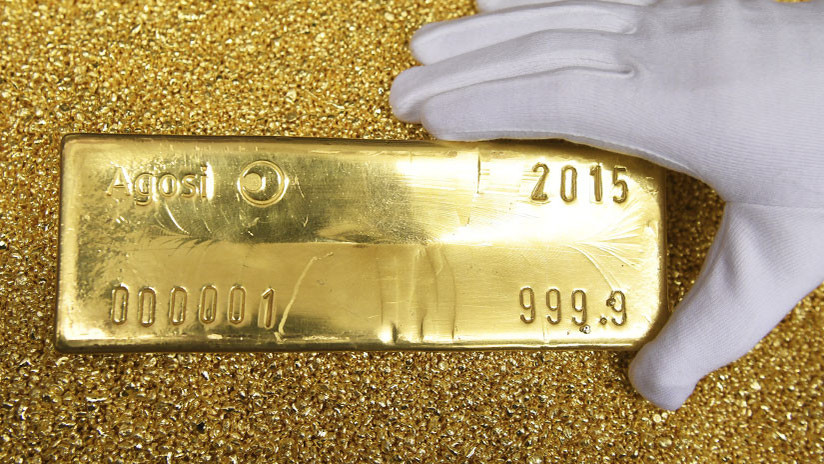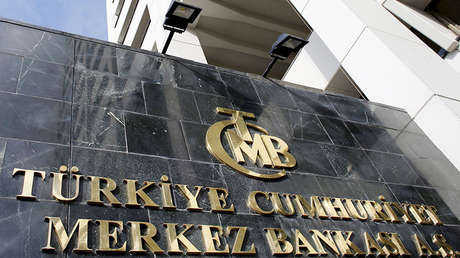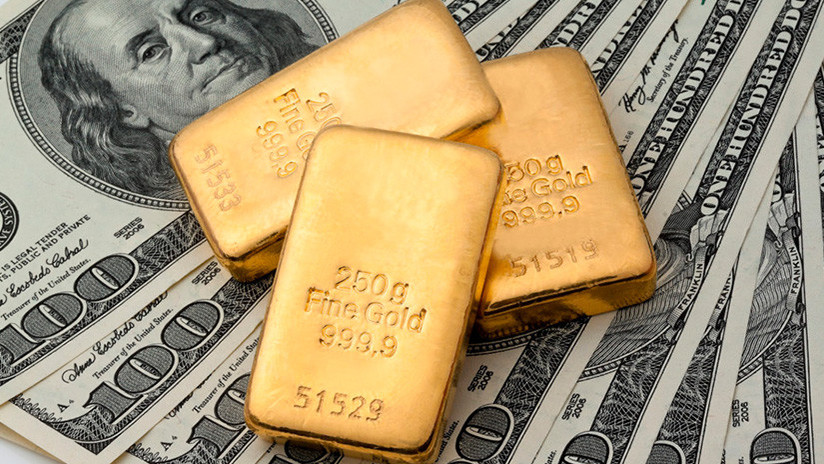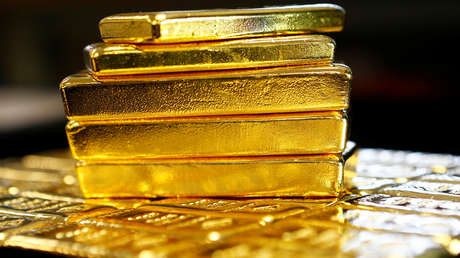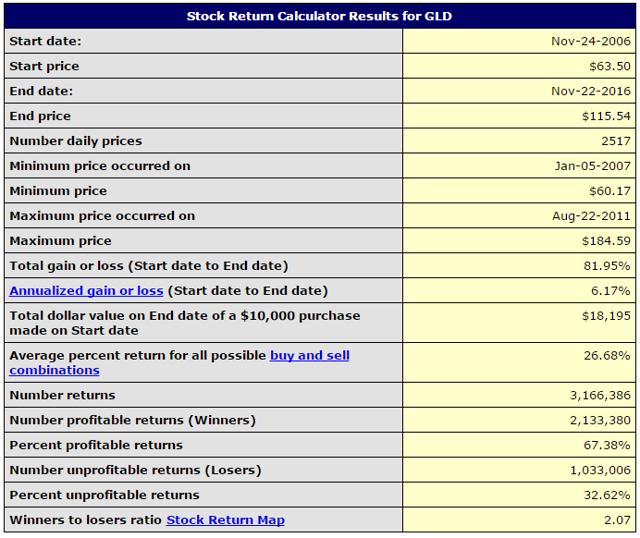Speculators' extreme gold-futures selling has been the dominant driver of gold's steep post-election plunge. Their near-record rush for exits blasted gold lower so fast that investors were spooked into fleeing.
But speculators' epic futures long liquidation that crushed gold sure looks to be exhausting itself. So many gold-futures longs have been dumped that there simply aren't many left to sell.
Once speculators' aggressive gold-futures selling ceases, gold prices will stabilize which will arrest the parallel investor selling. That decisive bottoming will pave the way for gold's bull market to resume.
Gold has suffered brutal, withering selling pressure in the month following the U.S. presidential election. The stock markets' surprise surge after Trump's surprise win has led speculators and investors alike to rush for the gold exits. As usual the former group's extreme selling came largely through gold futures. But this gold-futures dumping has been so severe that it is rapidly exhausting itself, a bullish omen for gold.
Gold's stunning post-election selloff resulted from a united mass exodus by gold's two dominant groups of traders. Speculators ferociously dumped gold futures with an intensity rarely witnessed, while stock investors jettisoned shares in the leading SPDR Gold Trust ETF (NYSEARCA:GLD) far faster than gold itself was falling. With so much gold being spewed into the markets so rapidly, this metal didn't have a chance of staying on its feet.
Gold futures had actually skyrocketed on election night, up 4.8% to $1337 as Trump's perceived odds of winning started to soar. But once the plummeting stock markets rebounded violently, the gold selling began. And it soon intensified after the election. Not only did stock markets shockingly surge to new all-time record highs, but the U.S. Dollar Index blasted up to a major new 13.7-year secular high of its own.
Gold has always been a contrarian anti-stock trade. As a rare asset that moves counter to stocks, gold's critical investment demand is heavily dependent on stock-market fortunes. Investors alternatively flock to gold to diversify their stock-heavy portfolios when stock markets fall, and then abandon it as stocks soar again. The exceedingly-strong post-election stock markets swiftly slayed gold investment demand.
Record stock-market highs breed extreme euphoria and complacency. Traders naturally start to believe stocks do nothing but rally indefinitely. Thus their interest in deploying capital in counter-moving gold fades to oblivion. And since investment demand fueled the great lion's share of gold's new bull market this year, this metal couldn't stand without it. Gold's recent cratering resulted from euphoric stock sentiment.
While speculators' extreme gold-futures selling and investors' extreme GLD-share selling over the past month share the blame, that's too much to cover in a single essay. So this week I'm focusing on the gold-futures side. While the massive post-election gold-futures dump was miserably painful, it looks to be exhausting itself which is very bullish. The finite supply of gold futures to sell is rapidly dwindling.
Gold futures have a wildly-outsized impact on gold prices, dominating short-term action. Futures offer radical leverage far beyond the decades-old legal limit in the stock markets of 2.0x. Every gold-futures contract controls 100 troy ounces of gold. At $1175, that's worth $117,500. But the maintenance margin required to own each contract is just $6000 this week, enabling maximum leverage running way up at 19.6x!
And that's actually fairly modest for gold-futures trading, with 25x+ being common when gold hasn't just plunged. Even at 20x, each dollar of capital speculators trade in the futures market commands 20x the impact of a dollar invested in gold outright! So when speculators as a herd aggressively buy or sell gold futures, the gold price moves fast. Their collective amplified power to move gold is immense and unparalleled.
Exacerbating their utter dominance over this metal's short-term fortunes is the fact that gold's reference price traders watch is that very futures one. So when futures speculators bully gold around with their extreme leverage, investors are quick to react which intensifies gold's moves. Contrarian investors have long decried this blatantly-unfair-if-not-absurd gold-market structure granting futures speculators such supremacy.
Further complicating this whole messy situation, gold-futures speculators' trading activities are obscured by low-resolution data. Not only are their trades only reported once a week, but even that happens with a 3-trading-day delay! This effectively hides what gold-futures speculators are doing from wider scrutiny by investors and analysts. This lack of futures transparency has long been a serious problem for gold.
Because of gold futures' extreme inherent leverage, speculators must maintain an ultra-short-term focus to survive. At 20x, a mere 5% adverse gold move will wipe out 100% of their capital risked! So countless times when gold-futures trading on mere herd sentiment drives big gold moves, the day it happens the resulting volatile price action is wrongly and falsely attributed to fundamental changes in the world gold market.
Speculators' collective gold-futures positions are published late every Friday afternoon in the famous Commitments of Traders reports from the CFTC. Those are already old though, current to the week that ended the preceding Tuesday. Thus speculators' market-moving gold-futures trading activity is hidden for up to 8 trading days, which is inexcusable in this information age. Maybe Trump's people can fix this.
So by the time extreme gold-futures selling is unmasked, the resulting big gold plunge has already long been wrongly attributed to fundamentals which greatly damages sentiment for investors. This seriously retards gold investment demand, creating a vicious circle where selling begets selling. And that's what has happened to gold in the wake of the election. Gold selling is feeding on itself, driving even more selling.
This first chart looks at gold and its weekly gold-futures CoT data over the past couple years or so. The total upside bets on gold by both large and small speculators, gold-futures long contracts, are rendered in green. Their total downside bets, short contracts, are shown in red. Gold just suffered its third major plunge this year for the same reason the first two happened, extreme selling by gold-futures speculators.
This longer-term perspective is essential for understanding what's happened to gold in the past month since the election. Note above how gold prices are heavily positively correlated with speculators' long contracts in gold futures. When they collectively ramp up their upside bets, gold surges higher. Then later when they sell these ultra-leveraged longs, gold plunges. Nothing is more important for short-term price action!
While speculators' downside bets on gold through futures shorts are smaller, they have the same gold impact but in the opposite direction. Gold prices are heavily negatively correlated with speculators' gold-futures shorts. When they effectively borrow gold they don't own to short sell it in the futures market, gold is pushed lower. Later when they buy offsetting long gold-futures contracts to cover their shorts, gold climbs.
In the gold-futures market, the downside price impact of selling long contracts and adding short ones is identical. Between January 2015 and December 2015, gold fell 19.3% largely because these futures speculators sold 90.9k long contracts while adding 107.0k short ones. That works out to the equivalent of 615.5 metric tons of gold, nearly 1/5th of 2015's total global mine production! That can't be absorbed fast.
Last year's intense gold-futures selling by speculators, much of which happened on Fed-rate-hike fears, ultimately pushed gold to a deep 6.1-year secular low a year ago in mid-December. Gold bottomed the very next day after the Fed's first rate hike in 9.5 years, entering a new bull market that flourished in much of 2016. By early July, gold had powered 29.9% higher to hit its best levels seen in 2.3 years.
What helped fuel gold's strong new bull run in addition to surging investment demand? Heavy-if-not-extreme gold-futures buying by the speculators! Over that span they added 249.2k long contracts while covering 82.8k short ones. That works out to the equivalent of 1032.6t of gold buying, nearly tripling the parallel 351.1t build in that GLD gold ETF's physical gold-bullion holdings over that same bull-market span!
Speculators' enormous gold-futures buying pushed their long contracts to an all-time record high 440.4k in early July. Right after that CoT report was published, I wrote an essay warning about the resulting record selling overhang gold faced. While that was a hardcore contrarian stance in the midst of gold's mid-summer euphoria, if speculators exited their record longs fast gold was threatened with a serious selloff.
Amazingly part of speculators' mass exodus from their excessive gold-futures longs tarried all the way until early November's presidential election! That's pretty shocking, and I never would have predicted such an unprecedented delay last summer. Overall between early July and the latest CoT report, the speculators have sold 165.1k gold-futures long contracts while adding 7.3k short ones. That's serious selling.
With each gold-futures contract controlling 100 ounces of gold, speculators have spewed the equivalent of 536.2 tonnes of gold into the markets! And much of that slammed gold almost all at once following the election surprise. Gold plunged after Trump's win because futures speculators ran for the exits. I really suspect the GLD investors wouldn't have fled in sympathy if futures speculators hadn't paved the way.
Thankfully this extreme gold-futures selling looks wildly overdone. Speculators hold only so many gold-futures long contracts, this supply of paper gold is very finite. And once all the weak-handed traders susceptible to being scared into selling low have largely exited, this extreme futures selling will dry up. As this next chart zooming in to the past year shows, odds are this gold-futures selling is exhausting itself.
After speculators' gold-futures longs hit their all-time record high in early July, they surprisingly defied the odds to hold near those levels for several more months. In the past big surges of long buying were short-lived, soon collapsing. But there was a lot of conviction gold's young bull was heading higher, so speculators were loath to sell. Until early October, when gold drifted below key $1300 support triggering stops.
Since gold futures are so hyper-leveraged, speculators must run tight stop losses so they aren't quickly wiped out when gold moves against their bets. So there was a huge cluster of long-side stops set right under $1300. As the initial stops were triggered, the resulting selling accelerated gold's losses. This in turn tripped more stops, exacerbating gold-futures selling. And the result was early October's mass stopping.
That alone was an extreme and rare event, and should've flagged a major bottom within an ongoing gold bull. And indeed it did for over a month, with gold initially grinding higher along key support at its 200-day moving average before surging into the election as Trump's perceived odds of winning grew. It's hard to believe now, but remember pre-election everyone feared a Trump win would be disastrous for stocks!
But early the morning after the election, stock-index futures started soaring. One elite multi-billionaire investor had seen stock-index futures limit-down at 5% losses, and left Trump's party to deploy $1b into stock-index futures in the middle of the night. Then Trump's victory speech was not only magnanimous, but he claimed Clinton had called and conceded. Stock futures started to soar with no contested election.
That's when the heavy gold selling started. After rocketing up nearly 5% on election night on big safe-haven buying as stock markets burned, speculators rapidly exited those gold-futures longs. In the first full CoT week after the election surprise, they dumped a staggering 45.9k long contracts or nearly 1/7th of their entire positions! That was epic, the 6th-largest long liquidation out of 933 CoT weeks since early 1999.
While that extreme mass exodus from gold-futures longs abated to just 0.6K contracts in the second CoT week after the election, it accelerated again in this latest one. That was current to November 29th, which was the newest CoT report available when this essay was published. Speculator long dumping ramped right back up to 19.0k contracts, right on the edge of the 20k+ contract single-week moves that are huge.
This resurgence in speculators dumping gold-futures longs was likely due to the outsized impact their earlier selling had on gold sentiment. Unfortunately that initial massive wave of selling in the week right after the election was wrongly interpreted at the time as gold's fundamentals deteriorating. That scared the institutional investors owning GLD shares, so they started to exit en masse on bearish futures-driven sentiment.
The heavy GLD selling during Thanksgiving week as a result of the extreme gold-futures selling the week before forced gold low enough to get the gold-futures speculators fleeing again! This is a perfect example of the selling-begets-selling vicious circle that sometimes ignites in gold. In the 3 CoT weeks reported since the election, speculators jettisoned 65.6k long contracts or nearly 1/5th of their election-day bets.
But odds are this extreme gold-futures selling is exhausting itself. Out of all the gold-futures longs the speculators added in gold's entire young bull between last December and early July, a staggering 66.3% have been unwound. Nearly 2/3rds of long-side gold-futures buying fueling 2016's gold bull has been reversed! That's staggering, leaving speculators' collective upside gold bets at 275.3k contracts per the latest read.
That's really low on multiple fronts. Speculators' gold-futures longs have never and will never retreat to zero, as there is always some base demand for leveraged gold upside. During 2015 for example, deep in a major bear where gold bearishness was epic, speculators' gold-futures longs averaged 223.2k contracts. That's only 52.0k below current levels, guaranteeing the lion's share of the selling is behind us.
Assuming 2015's average long levels will be seen again, which is very unlikely in a new gold bull, then over 3/4ths of the maximum total speculator gold-futures long selling since early July's peak upside bets is behind us! But with gold still in a new bull market despite the super-anomalous post-election plunge, longs almost certainly aren't heading all the way back to bear-market levels. That's very bullish for gold.
Speculators' collective longs have fallen to a 9.0-month low, their worst levels since early March before gold formally entered new-bull-market territory at 20% gains off last December's secular low. With such a massive retracement already, it's hard to imagine much more selling. In most futures selloffs, early selling is the strongest as stops are triggered and weak hands flee. Then selling moderates once they're out.
The only thing that could potentially trigger more meaningful speculator gold-futures long dumping is significant new gold lows. But with gold pounded to a 10.1-month low this week, its worst levels since way back in early February, fully 62.3% of this gold bull's progress has already been erased! It's difficult to conceive of enough new gold selling materializing to push this metal much lower after such colossal technical damage.
And if speculators' extreme gold-futures long selling is exhausting itself and largely over, then gold is going to stabilize if not start marching higher. That will arrest the heavy differential GLD-share selling in response to gold prices spiraling lower. So when speculators cease dumping longs, odds are gold will carve a major durable bottom. That's likely happening now, and if not almost certainly by next month at the latest.
But gold does remain at risk of more gold-futures short selling. Since early July, speculators' total shorts merely grew by 7.3k contracts. During this latest CoT week, they were only at 107.5k which isn't too far above their 95k-contract bull-market support that has held strong since April. There are a couple potential upside targets for new shorting if some catalyst spooks speculators into believing gold is heading for a fall.
The highest spec shorts have been since gold's new bull market formally began in early March is 122.7k contracts. That's only 15.2k above the latest CoT read, not enough to ignite a major new gold selloff unless all this short selling happens within an hour or so. And in 2015, that dark bear year of hyper-pessimistic gold sentiment, speculators' shorts averaged 139.6k contracts. Even those levels aren't crazy-bearish.
Getting back to there would require 32.1k contracts of new shorting, which isn't huge compared to the 172.4k contracts of gold-futures selling already suffered since early July. The main potential catalyst for big gold-futures shorting flaring again is next week's FOMC meeting. The Fed is universally expected to hike rates for the first time in a year and the second time in 10.5 years, but that rate hike won't hammer gold.
This week federal-funds futures are implying a 93% chance of a rate hike next week, and it was way up at 99% as December dawned. So a rate hike won't surprise anyone, including speculators trading gold futures. The big risk comes from the accompanying quarterly Summary of Economic Projections, which shows where top Fed officials making decisions expect the federal-funds rate to be in the coming years.
The last SEP, or "dot plot", in late September showed Fed officials forecasting two rate hikes in 2017. Gold could see significant futures short selling if that increases to three. But if the Fed indeed hikes next week, it will have to be super-dovish in the rest of its communications to avoid spooking stock markets. Thus it's unlikely a hawkish SEP would be published the same day, greatly lessening the downside risk to gold.
Soon speculators and investors alike will realize how radically oversold gold is, and how anomalous its extreme post-election selloff was. These record-high stock markets literally trading at bubble valuations remain overdue to roll over into a new bear no matter what Trump does. And his proposed tax cuts and big government spending will ignite serious inflation. All of that is very bullish for gold investment demand!
While investors can certainly play the coming resumption of gold's young bull in that leading GLD gold ETF, individual gold stocks will really amplify gold's gains. While gold powered about 30% higher in the first half of 2016, the leading gold-stock index nearly tripled with a 182% gain! These huge gains were only reaped by smart contrarians willing to fight the crowd and buy low a year ago. The same is true today.
The bottom line is speculators' extreme gold-futures selling has been the dominant driver of gold's steep post-election plunge. Their near-record rush for the exits blasted gold lower so fast that investors were spooked into fleeing. But speculators' epic futures long liquidation that crushed gold sure looks to be exhausting itself. So many gold-futures longs have been dumped that there simply aren't many left to sell.
And once speculators' aggressive gold-futures selling ceases, gold prices will stabilize which will arrest the parallel investor selling. That decisive bottoming will pave the way for gold's young bull market to resume. Investors will soon realize their radical underinvestment in gold isn't very wise, especially with wildly-overvalued stock markets trading at euphoric record highs. New investment demand will propel gold far higher.
